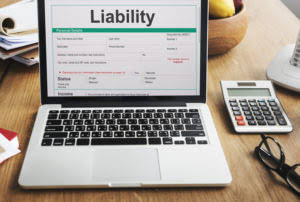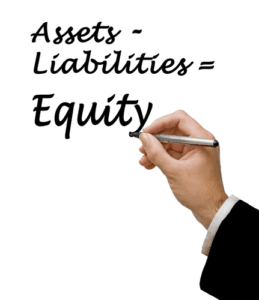Generally, the amounts reported in item J are based on the partnership agreement. If your interest commenced after the beginning of the partnership’s tax year, the partnership will have entered, in the Beginning column, the percentages that existed for you immediately after admission. If your interest terminated before the end of the partnership’s tax year, the partnership will have entered, in the Ending column, the percentages that existed immediately before termination. If the partner is an individual, the partnership will enter the partner’s SSN or individual taxpayer identification number (ITIN).
Decedent’s Schedule K-1
A person receiving a schedule K-1 form needs to report it in the tax season since the income received is taxable income. The Internal Revenue Service (IRS) must have already been notified in this balance sheet case. If you get a Schedule K-1 because of a windfall such as an inheritance from an estate or as beneficiary of a trust, it’s just the way it is. But if you’re receiving them due to investments in LLCs, partnerships, or a “C” corp, you should look at the bigger picture.
- Investors must be able to afford the loss of their entire investment.
- There are several types of partnerships, including general partnerships, limited partnerships, and limited liability partnerships.
- The partnership has included inversion gain in income elsewhere on Schedule K-1.
- Page four of Form 1065 is your Schedule K (not to be confused with a K-1).
- These items are included elsewhere in other income or deduction items on Schedule K-1.
- A nominee that fails to furnish this statement must furnish to the person for whom the nominee holds the partnership interest a copy of Schedule K-1 and related information within 30 days of receiving it from the partnership.
Box 3. Other Net Rental Income (Loss)
We do not exercise control over third-party websites, and we are not responsible or liable for the accuracy, legality, appropriateness or any other aspect of such website (or article contained therein). Part I deals with the Partnership information, which will be completed by Yieldstreet to identify the individual SPV name and tax identification number, depending on the investment opportunity that this K-1 is for. With the tax season coming soon, many of our accredited investors may be in the process of submitting their tax documents. Yieldstreet distributes Schedule K1, and to answer any questions investors may have about filling them out, we’ve compiled a breakdown of the form below. In this article you can find out what numbers on your Schedule K1 mean, as well as information on where you can find them in your online investment portfolio. A single-member LLC is taxed as a sole proprietorship unless it has elected to be taxed as a corporation.
Reasons One Would Receive a Schedule K-1 Form
This effectively shifts the income tax from the earner to those who benefit. The Schedule K-1 is the form that reports the amounts that are passed through to each party that has an interest in the entity. That’s because a partner can earn several types of income on Schedule K-1, including rental income from a partnership’s real estate holdings and income from bond interest and stock dividends. A partner can earn several types of income on Schedule K-1, including rental income from a partnership’s real estate holdings and income from bond interest and stock dividends. The U.S. federal tax code allows the use of a pass-through strategy in certain instances, which shifts tax liability from the entity (such as a trust or a partnership) to the individuals who have an interest in it.
K-1 form for S corporations
Yet another good practice is to import this information into the return from an excel spreadsheet that has already been verified. One will also receive a 1099 form if they invest in equity, such as a stock that pays dividends. S- corporations use the 1120-S form for the same purpose- to show k1 meaning each member of the entity how much they earned or lost for the tax year. The IRS will utilize the information detailed in the 1120-S to determine the percent ownership of an individual in an S-corporation.
Item L
Organizations and partnerships fill out K-1 forms and provide them to partners and shareholders. For example, companies must issue to their partners K-1s that provide details on their share of yearly earnings, their share of dividends and interest earned from the investment and other information. Schedule K-1 requires pass-through businesses to track each partner’s basis, or stake, in the company. Basis can be increased or decreased each year depending on each partner’s profits, losses, additional contributions or withdrawals. If you’re involved in a partnership or are considering entering one, you may want to consult a legal advisor to make sure you have a full understanding of the partnership agreement and how it informs documents such as Schedule K-1.
- If you have any other losses or income to report that doesn’t fall in the interest, ordinary dividends, royalties or capital gains category, report them here and attach a statement explaining what kind of income (or loss) you’re reporting.
- The partners must use the information provided on Schedule K-1 to pay income taxes on their share of the income when they file their personal income tax returns.
- Any link to a third-party website (or article contained therein) is not an endorsement, authorization or representation of our affiliation with that third party (or article).
- Enter any gain recognized on contributions of property during the year.
- If a decedent died in a prior year and the partnership continues to send the decedent a Schedule K-1 after being notified of the decedent’s death, then you should request that the partnership send a corrected Schedule K-1.
Schedule K-1 requires the partnership to track each partner’s basis in the partnership. In this context, basis refers to a partner’s investment or ownership stake in the enterprise. A partner’s basis is increased by capital contributions and their share of income. Investors who are also equity holders in an entity can expect to receive a Bookstime pro-rata share of the entity’s profits and losses.
File faster and easier with the free TurboTax app
Although the partnership provides an analysis of the partner’s capital account on item L of Schedule K-1, that information is based on the partnership’s books and records and can’t be used to figure the partner’s adjusted basis. Three-year holding period requirement for applicable partnership interests. Section 1061 increases the required long-term capital gains holding period for an applicable partnership interest from more than 1 year to more than 3 years. The holding period applies only to applicable partnership interests held in connection with the performance of services as defined in section 1061. If a decedent died in a prior year and the partnership continues to send the decedent a Schedule K-1 after being notified of the decedent’s death, then you should request that the partnership send a corrected Schedule K-1. If you receive an interest in a partnership by reason of a former partner’s death, you must provide the partnership with your name and TIN.





